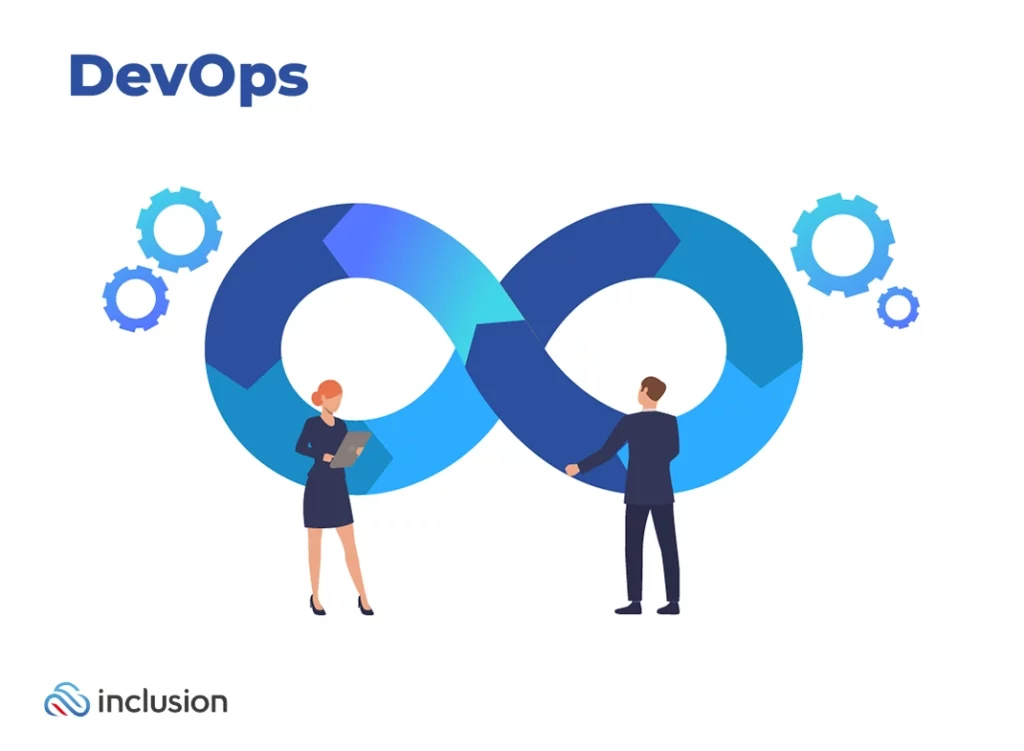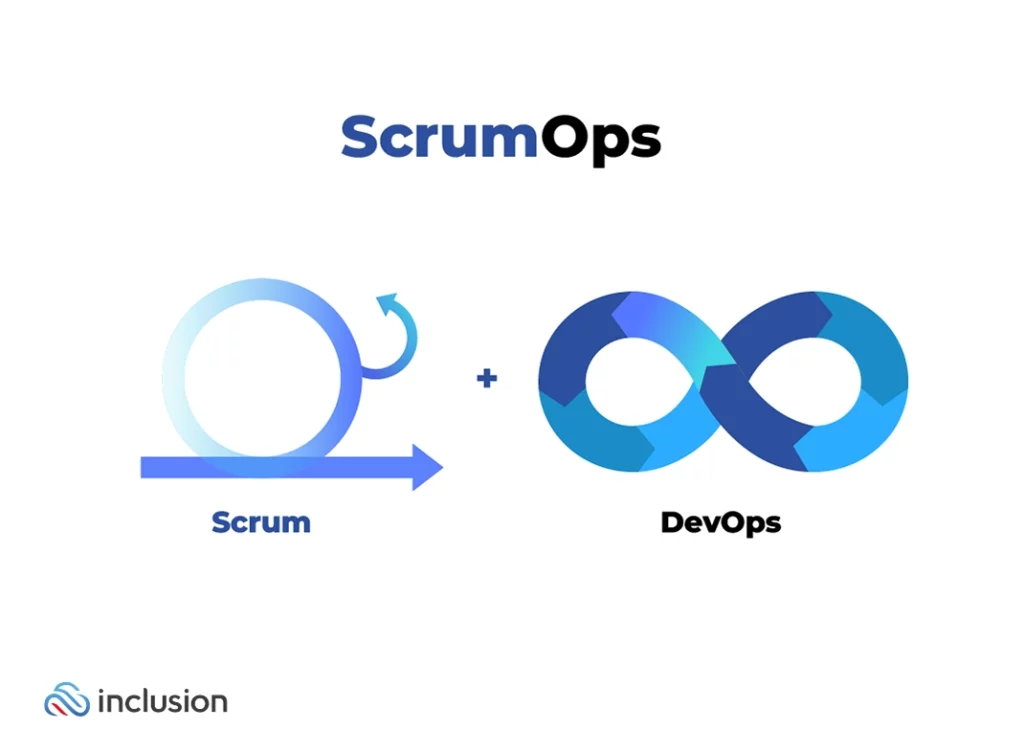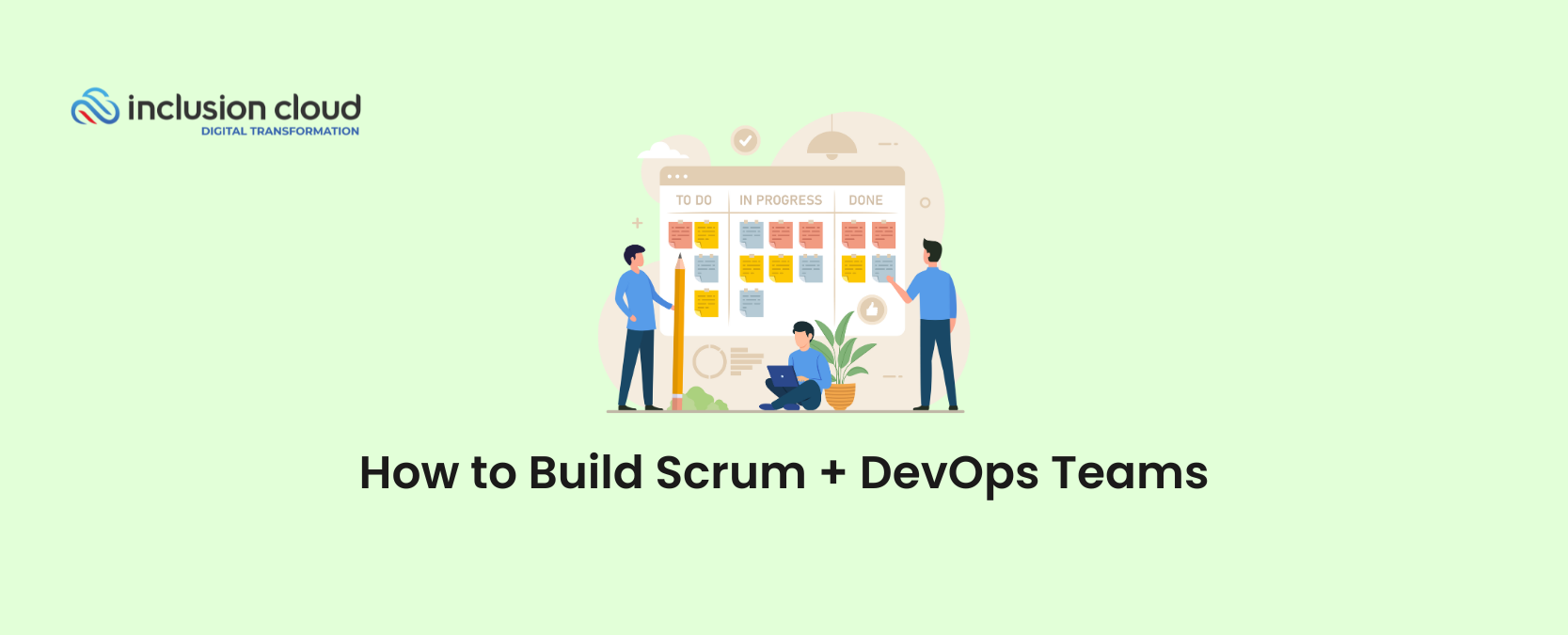Running a well-organized business does not have to be a stressful experience. Those who know how to adapt their business and apply efficient methodologies will be able to gain the greatest advantage at the lowest cost. Scrum and DevOps are two prominent methodologies.
Both are based on agile methodologies: while the fundamental principle of Scrum is to bring agility to development, the fundamental principle of DevOps is to bring agility to both development and operations. However, the founding principle of DevOps is to bring Agility to both Development and Operations. DevOps’s goal is to extend that agile mindset toward change to a new audience: IT operations.
Scrum is fundamentally applied to the principle of the agile methodology “Accept the variation of the requirements in Development, even if it is late. Agile processes take advantage of the change to achieve the customer’s competitive advantage”.
Many people believe that “agile” means Scrum and “DevOps” means continuous delivery. This oversimplification creates unnecessary tension between agile and DevOps methodologies, but in reality, they complement each other very well. As we delve deeper into Scrum and continuous delivery, let’s look at the practical links between Agile and DevOps. Let us first analyze the main aspects of a Scrum Team and then consider it in conjunction with DevOps.
What Is A Scrum Team?
A Scrum Team is a small, self-organized team that is in charge of delivering a specific product increment or component. They are both Agile, which means that they can quickly adapt to changes in requirements or unexpected problems.

The team of five to nine people, including the Product Owner and the Scrum Master, works in short cycles called Sprints to deliver potentially shippable increments of functionality for the product.
The Scrum methodology is built around the processes of the Scrum Team. It is based on Agile development principles that emphasize collaboration, flexibility, and responsiveness to change.
Why is a Scrum Team Important?
The Scrum team is a great way to organize and manage the development of a product. At the end of each Sprint, the team is responsible for delivering a product increment or a portion of the product.
The importance of forming a Scrum Team lies in the Scrum Team’s ability to be fast, flexible, and focused. As a result, the team can respond quickly to changes and produce a high-quality product based on the five Scrum values.
What are the 5 Scrum values?
The Scrum values are commitment, focus, openness, respect, and courage. These values serve as a guide for individual and team behavior in Scrum methodology, with the goal of increasing collaboration and project success.
The objective of implementing Scrum values at work and on projects is simple: to provide guidelines that keep the Scrum Team on track. Many agile paradigms become too complex to implement without the Scrum values.
What is DevOps?
DevOps is a software development practice that brings together people, processes, and technology to provide continuous value. The approach is divided into planning and tracking, development, build and testing, delivery, and monitoring and operations.
DevOps is distinct in that development, IT operations, quality engineering, and security teams collaborate to increase efficiency across all tasks involved in launching a new product, release, or update.

DevOps philosophy and focus
The DevOps culture, which is based on stability, consistency, and planning, seeks to identify new ways to improve and streamline processes. As a result, DevOps focuses on increasing efficiency, identifying programmable processes, and increasing automation. DevOps combines development, operations, and quality assurance. Cross-disciplinary teams work together to develop and deliver software.
Now that we’ve reviewed both methodologies briefly, let’s look at how they’re used in Agile Teams.
Scrum & DevOps
When a large organization proposes more or less agile work models, it faces a quandary. You can’t be agile if your organization is designed to be slow and cumbersome. Not only are DevOps and Scrum the ideal match, but there is also no other way.

Scrum is just a framework
Scrum is a simple framework for complex product development based on values and principles. It is not a prescriptive methodology that tells you how to design your process. Scrum is strongly focused on what is happening during the Sprint. A sprint is a short, time-boxed period during which a scrum team works to complete a specific amount of work. Sprints are at the heart of Scrum and agile methodologies, and getting sprints right will help the agile team ship better software with fewer headaches. Scrum will not tell you how your process should look during the Sprint. It will only tell you the bare minimum of what you need to have in order to claim to use Scrum.
DevOps starts with System Thinking
DevOps starts with Systems Thinking and looks at the entire value stream in the system rather than just the development phase. Systems Thinking considers how each interconnected element in the system affects one another. Elements in a complex system, such as a corporation, do not work in isolation. A change in one element will have an effect on another element in the system.
DevOps is also based on Lean Thinking, in addition to Systems Thinking. Lean Thinking is about reducing waste in the value stream. Any non-value-added activity can be considered waste.
Because Scrum is based on Lean Thinking, Systems Thinking and mapping the entire value stream are all critical and work well together. When we use Scrum and DevOps, all activities in the value stream, from customer requests to the release of the product to the production environment or to customers, take place within the Sprint. This does not imply that a Sprint is a mini-waterfall in which deployment occurs only at the end of the Sprint or that all analysis occurs at the start of the Sprint.
Scrum Team applying DevOps: The Composition
Scrum Teams that use DevOps work differently than Scrum Teams that do not use DevOps. Not only their working style is different, but the team composition is also dissimilar.
According to Scrum, the Development Team consists of professionals who deliver potentially releasable increments at the end of the Sprint. DevOps professionals in Scrum Teams adopting DevOps are everyone who processes the Product Backlog Item (PBI) in the entire value stream from beginning to end. Many people believe that the Development Team is only made up of developers, which leads them to believe that Scrum is only used during the development phase.
A Scrum Team implementing DevOps includes, but is not limited to, marketing personnel, analysts, UI/UX designers, developers, operations personnel, sysadmins, data scientists, and site-reliability engineers. They all work as a team to provide value to their customers.
Scrum’s work with DevOps is centered on the Three Ways of DevOps.
DevOps Three Ways
The DevOps Three Ways are the underlying principles that makeup DevOps. They work with Scrum and are based on Lean Thinking and Systems Thinking. Because the Three Ways are not about specific tools and practices, they are frequently emphasized in community discussions about DevOps. The three ways are as follows:
The First Way: Flow/Systems Thinking
The first of the DevOps Three Ways is to Optimize Flow. It emphasizes overall system performance rather than a specific silo of work or department. This can be as large as a division (e.g., Development or IT Operations) or as small as an individual contributor (e.g., a developer or system administrator).
Anything that interferes with the smooth flow of PBIs through the value stream may be a bottleneck that should be removed. Many agile practitioners believe that flow is incompatible with Scrum’s Sprint because the premise is:
- During Sprint Planning, you plan for the entire PBI that needs to be completed for the Sprint. The Sprint is a commitment.
- After the Sprint Review, you can only deliver to production once.
When the Scrum Team decides to use a flow-based model, the Scrum Master must learn about it and coach the entire Scrum Team on how Scrum works with the flow-based model.
Implementing the First Way results in never passing a known defect to downstream work centers and never allowing local optimization to cause global degradation. Also, DevOps is always looking for ways to increase flow and gain a deeper understanding of the system (as per Deming).
The Second Way: Amplify Feedback Loops
The second method is to create right-to-left feedback loops, also known as Amplify Feedback. The goal of almost any process improvement initiative is to shorten and amplify feedback loops so that necessary corrections can be made on a continuous basis.
The Second Way’s outcomes include understanding and responding to all customers, internal and external, shortening and amplifying all feedback loops, and embedding knowledge where it is needed.
The Third Way: Culture of Continual Experimentation and Learning
The Third Way is about creating a culture that encourages two things: continuous experimentation, taking risks, and learning from failure; and understanding that repetition and practice are required for mastery.
We require both of these equally. Experimentation and risk-taking are what keep us striving to improve, even if it means venturing deeper into danger than we’ve ever gone before. And we need to master the skills that will allow us to retreat out of the danger zone when we’ve gone too far.
The Third Way entails allocating time for daily work improvement, developing rituals that reward the team for taking risks and introducing flaws into the system to boost resilience.
Scrum Teams that use the Three Ways of DevOps will operate differently than those that do not. It is worth noting that we did not propose alternatives to Scrum, but rather complementary methods. As a result, none of the three contradicts the Scrum Framework or Scrum Values.
DevOps is more about Organization Culture than about Tools
Scrum does not promote DevOps; both are cultural movements that can inspire your organization and provide better ways to achieve your goals. Small, frequent changes to the project are one of Scrum’s most powerful drivers. Furthermore, DevOps brings stability to the application development project. Scrum and DevOps work better together than separately because Scrum is all about development and DevOps is all about implementation.
We can assist you in improving these agile methodologies and others, like POD Teams, so that you can grow your business faster and improve digitization processes.
Contact us and let’s embrace innovation together!





